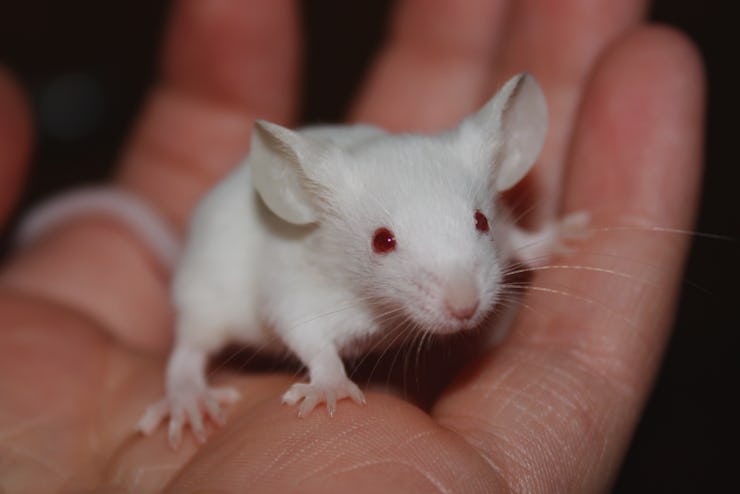What We Talk About When We Talk About Lab Mice
Lab mice are obese with rapid hearts and distinctly non-human genetics. Why do we care what happens to them in controlled settings?

Mice account for roughly six out of 10 critters in scientific research and a significant portion of headlines about breakthrough biological developments. And yet, drugs that work swimmingly in mice rarely make it to humans. Of the compounds that go through preclinical studies to be judged before the Food and Drug Administration, only 8 percent end up on the market.
“As a number of people have pointed out,” Dr. Michael Snyder, a genomics expert at Stanford University, tells Inverse. “Cancer has been cured many times in the mouse.”
When should we listen to a breathless headline about what happened to our endlessly killable lab buddies? When does mouse science matter to humans? When does Algernon earn those flowers?
To understand what lab results mean, it helps to understand why mice are in so many labs. For one thing, they’re cheap. This is because they breed quickly, which is another hugely important mouseperk. Our reliance on them is also self-reinforcing: We’ve sequenced the mouse genome so we can pop out select murine genes on command. We’ve sent mice to space and controlled their thoughts with flashes of light. In the U.S., scientists use 20 million to 30 million mice a year.
“No question, the mouse is an invaluable model,” Snyder says. He points out that scientists have translated “very human-like disease effects” into mouse using genetic mutations that occur in people.
But mice are also far from perfect mimics. The mouse heart rate is 10 times faster than that of a human. Mice in our labs, by and large, are obese compared with their wild counterparts — as Johns Hopkins neuroscientist Mark Mattson told Slate in 2011, because lab mice don’t have to scavenge for their food, we’re raising a nation of 20 million lazy little butterballs.
“Certain metabolic diseases can be quite tricky,” Snyder says. “At the end of the day I think it has to do with biology. Mouse physiology is quite different.”
Snyder has a fantastic vantage to assess the difference between mouse and man. Along with dozens of geneticists around the world, Snyder authored series of papers in 2014 on the Encyclopedia of DNA Elements (ENCODE) that compared genomes of humans to those of mice. Though the genes themselves were similar in tissues, the way they were expressed and regulated were not. “The gene expression profiles were closer within a species than between species,” he says. What that means is that a human liver looks closer to a human kidney or heart than it does to a mouse liver counterpart, at least in the way genes are expressed.
What drives the difference in expression patterns within species are the metabolic genes. This is part of the reason drugs that need to be metabolized, which is almost all of them, don’t translate in mice. Tread with caution around mouse metabolism. “Unless it’s a therapy done in a very novel way, I’d be very cautious,” Snyder says about accepting the premise of splashy headlines.
Still, subtleties don’t warrant negation. If you get away from metabolism, tissues-specific genes — those in brains and testes, for instance — mice are decidedly more human. “Of course, hemoglobins and globins in general would be classic cases,” Snyder says. Might we favor discoveries that target brain- or testes-specific gene activity in mice? “Certainly for modeling diseases I think that’s safe to say, you could model it out nicely.”
If someone is touting a cancer cure, a magic bullet forged out of a holy grail, and it’s aimed at a mouse? If it’s a drug that relies on pharmokinetics, feel free to glide on by.
“Bottom line is, a mouse is a great organism,” says Snyder. “But you want to be cautious.”